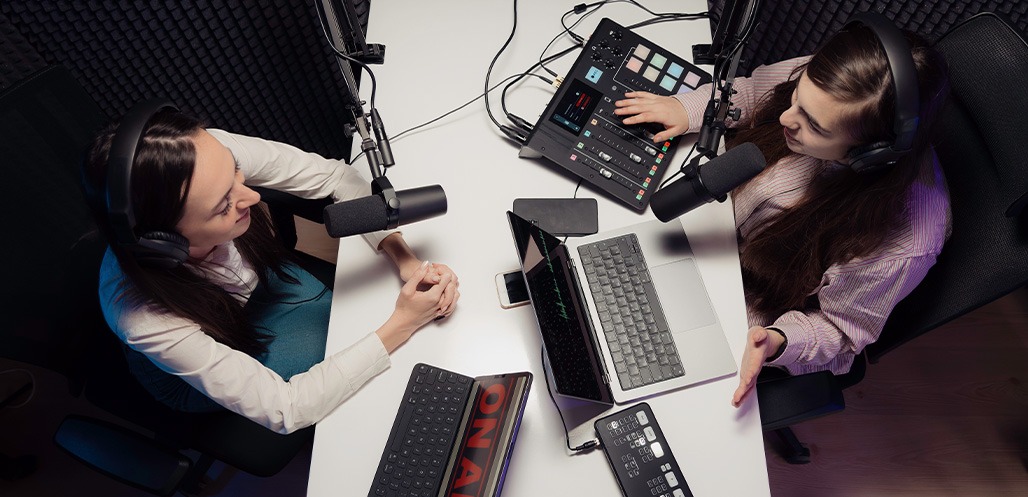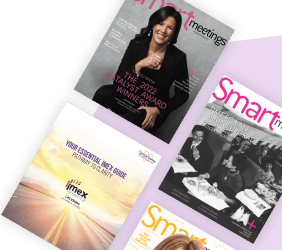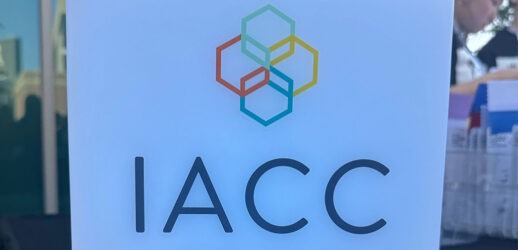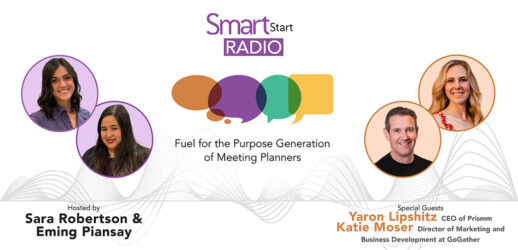The secret sauce in your event promotion recipe
Now that 2025 is under way, planners are renewing their search for fresh ways to stand out in a crowded field of conferences, trade shows and corporate events. Well folks, I’m going to let you in on the not-so-secret weapon that’s been hiding in plain sight: podcasting. I’ve been listening to podcasts for almost 20 years, and they’re probably the main way I keep up on tech and industry news. I’ve also been creating my own podcasts for over 10 years.
For most people, podcasts are the way they get their true crime fix, or tickle their funny bone, or gain political insight (and sometimes all three at once), but these downloadable audio nuggets are also a goldmine for event promotion and community building. So let’s pop in our earbuds and explore why podcasting might be the missing ingredient in your event marketing strategy.
From Ears to Seats: How Podcasts Can Drive Attendance
Let’s face it, getting butts in seats (or eyes on screens) is the name of the game for event professionals. Podcasts are like a direct line to your potential attendees’ brains. With over 580 million podcast listeners worldwide (eMarketer estimate for 2025 based on historical data), you’ve got a captive audience just waiting to hear about your next big event. And, since most people set their podcast players to automatically download their podcast files, most podcasts are listened to within 24 hours of release, so your content will be the freshest of fresh.
But it’s not just about numbers. Podcasts offer a unique opportunity to connect with your audience on a more personal level. Instead of shouting into the void of social media, you’re speaking directly into their ears, often while they’re commuting, working out or doing chores. There’s something intimate about a podcast that’s hard to explain. It’s like having a one-on-one conversation with potential attendees, minus maybe the awkward small talk.
Building a Community, One Episode at a Time
Now that you’ve got their attention, it’s time to turn that attention into a community. Once you’ve established that intimacy, people enjoy the feeling of being part of the “in crowd.” Most successful podcasts naturally start to provide online spaces for their listeners to interact and hang out. While the ultimate goal might be to get them to connect at your event, in between events you need to foster that community somewhere online. There are plenty of options for your “town square,” including Discord, Slack and other technology platforms, but I’ve also seen successful communities grow out of Reddit subs and text messaging. The “venue” is less important than giving folks a place to gather and discuss.
Read More: Refract Seattle: The Power of Connecting Events to Local Community
With a little luck, these are going to be your most engaged attendees. So use that to your advantage! Knowing your attendees inside and out is a key part of successful events, so bring these superfans into the fold. Ask their opinions on what they like and don’t like about your events. Offer prizes and rewards. Share behind-the-scenes insights. Conduct interviews with industry leaders and experts that are just for the podcast and online community. All of these things are going to contribute to the feeling that they’re insiders, and they will reward you with loyalty and evangelism. Between the podcast and the online community, you can keep your audience engaged 24/7, 365 days a year—not just the 3 days of your event!
The ROI of Talking into a Microphone
I know what you’re thinking. “This all sounds great, but what about the bottom line?” The good news is that not only is podcasting relatively inexpensive to do (it’s mostly an investment in time, but more about that later), but it actually can be a net positive in your budget. According to eMarketer, 2024 podcast advertising spending was estimated at $4.02 billion. Yep, that’s a billion with a “B.”
Now, to be fair, most of that is going to celebrities, influencers and sports legends, but whatever industry you’re in, there are probably vendors, suppliers and others willing to support you at much lower tiers than a typical event sponsorship. A single $1000 sponsorship would more than cover an adequate podcasting setup and a year’s worth of a podcast publishing platform. $2000 would give you a top-notch podcasting setup. And while covering your startup costs would be huge, the real kicker is that most of the time these are quarterly or even monthly payments that not only cover your monthly costs, but can make the podcast net positive over the course of the year.
Quality (and Consistency) Counts
Even in our in-person events, I always prioritize audio quality, so it shouldn’t come as much of a surprise to those that know me that I’d do so here. So there are two important things to remember, and yep, the first one is this: don’t skimp on audio quality. No AirPods, no internal laptop mics. It’s an audio-first medium, so put the audio… first.
For gear, my “economical” setup would be a Blue Yeti USB microphone (there are a lot of good ones out there, but this one also looks cool) and a good pair of studio headphones like the Sony MDR-7506. For even better sound, I’d recommend a “real” microphone like the Heil PR40 broadcast microphone on a swing-arm mount and a computer audio interface like the Sound Devices Mixpre-3.
However you run your setup, you’re still going to need a podcasting platform to publish your episodes and add things like titles and show notes. It is possible to completely do this on your own, but it takes being a bit techy. It’s much easier to just use an existing service, which for small podcasts runs about $20/month. Personally, I’ve been very happy with Transistor.fm.
The second important thing to remember is that consistency matters. Far, far too often a podcast starts out strong, but after only a few weeks or months, it runs out of steam and slowly starts publishing less and less often. It takes a while to build an audience. If you plan on being weekly, make sure you have at least 30 episodes in mind before you even think of buying a mic. Thirty episodes is barely half a year’s worth of content. If you don’t think you have enough content for every week, make it every two weeks. Whatever you decide, make it consistent.
It’s a Matter of Time
As I hinted at above, that means that the biggest cost of starting a new podcast is one of time. It takes time to brainstorm topics, time to set up the studio, time to arrange guests, time to edit the audio, time to write up the show notes. Beyond the potential $2,000 in startup costs, podcasts require a pretty fair amount of “sweat equity.”
The good news is that it’s nowhere near what it used to take. Many podcast platforms are offering AI tools, making it much faster and easier to crank through the busywork of being a podcaster. For me, using tools like ChatGPT and the auto-generated transcripts from our recording platform (we use Riverside, but you can just as easily record in Zoom or directly to your computer), I can edit and publish a full episode of the Event Tech Podcast in about an hour. That means, including the recording time, I’m spending about two hours every week on the program. That’s not nothing, but it’s also not too much time that I can’t keep up (most weeks). You might even be able to rope in your marketing team to help out, further reducing the burden on what’s probably an already overloaded event team.
In the end, podcasts are more than just another marketing tool. They’re a way to connect with your audience, build a community and establish your brand in the ever-competitive world of event planning. They offer a unique blend of intimacy and reach that’s hard to match with pretty much any other media.
So grab a good microphone and a pair of headphones, clear your throat and get ready to podcast your way to event success. Who knows? You might just find your voice becoming the next thing in events!
Smart Meetings also produces two of its own podcasts, “Smart Start” and “What One Thing?” Give them a listen!
This article appears in the January/February 2025 issue. You can subscribe to the magazine here.




